Introduction
In the vibrant world of artificial plants and flowers, a fascinating journey unfolds from the initial concept to the final product reaching the market. This journey, often hidden ‘behind the scenes’, is a testament to the intricate craftsmanship and dedication that goes into creating each artificial plant and silk flower. At the heart of this industry, the transformation of various materials, including silk, plastic, and other eco-friendly components, into stunningly realistic faux plants and flowers, is an art form in itself.
The evolution of artificial greenery, from the Victorian era’s silk flowers to today’s lifelike fake plants, reflects a rich history and an unwavering commitment to quality and detail. In this article, we delve deep into the world of artificial plant manufacturers, exploring how these beautiful creations of nature are meticulously crafted, packaged, and delivered to businesses across the globe.
Our journey begins in China, a hub for the production of artificial plants and flowers, where manufacturers combine traditional techniques with modern technology to create a wide selection of greenery that rivals the real thing. The process is not just about replicating the appearance of real plants but also about capturing their essence, ensuring that each leaf, stem, and petal contributes to the overall authenticity and appeal of the final product.
As we explore the journey of these plants from concept to customer, we will uncover the hard work, research, and innovation that go into making each artificial plant and flower. From the selection of materials like silk, plastic, and wood to the final stages of packaging and delivery, every step is a blend of creativity, precision, and efficiency.
Join us as we take you through the fascinating process of creating artificial greenery, highlighting the dedication to quality, the pursuit of eco-friendly practices, and the commitment to providing low-cost, long-lasting solutions for businesses around the world. This is a journey that redefines the beauty and versatility of artificial plants and flowers, setting new standards in the industry.
The Birth of an Artificial Plant
1. Conceptualization and Design
The journey of every artificial plant and silk flower begins with a creative spark. Designers, inspired by the diverse beauty of nature, embark on a meticulous process to ensure that each artificial plant and silk flower captures the essence of its real counterpart. This stage is crucial, as it sets the foundation for the quality and appeal of the final product.
In recent years, trends have shifted towards more realistic and detailed designs. The demand for silk flowers and plants that mimic the intricate details of real greenery has grown, driven by businesses seeking to create natural, inviting spaces without the upkeep of real plants. Designers often draw inspiration from various eras, with Victorian-era motifs still influencing contemporary silk flower designs.
2. Material Selection
The choice of materials is a critical step in the creation of artificial plants. Manufacturers use a range of materials, from traditional silk to modern plastics, ensuring that each plant not only looks but also feels like the real thing. The selection process involves a careful balance between aesthetics, durability, and cost-effectiveness.
Plastics have become a popular choice due to their versatility and longevity. However, with a growing emphasis on sustainability, manufacturers are increasingly exploring eco-friendly materials. The use of recycled plastics and biodegradable materials is on the rise, reflecting the industry’s commitment to environmental responsibility.
In addition to plastics, other materials like wood, cotton, and various fabrics are also used to add unique textures and details to the plants. The use of diverse materials allows for a wide selection of artificial greenery, catering to different preferences and styles.
Manufacturing Process
1. Crafting the Plants
The transformation of raw materials into exquisite artificial plants and flowers is a journey that combines artistry with precision. In the factories, skilled craftsmen and women take the various materials – silk, plastics, and sometimes, eco-friendly alternatives – and begin the meticulous process of molding and shaping them into lifelike greenery.
Each leaf, stem, and petal is crafted with attention to detail, ensuring that the end result is as close to nature as possible. The process of making these artificial plants often involves advanced techniques, where the silk, plastic, or other materials are cut, dyed, and assembled to mimic the intricate patterns and textures of real plants and flowers. Quality control is paramount at this stage, as each artificial plant and flower represents the brand’s commitment to excellence.
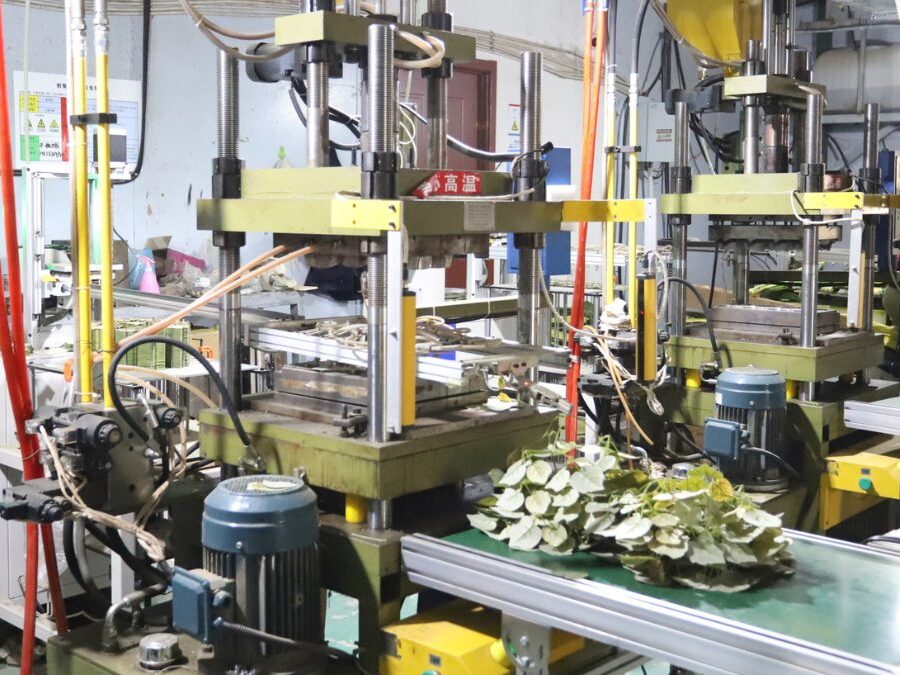
2. Innovations in Production
The artificial plant industry is not static; it thrives on innovation and adaptation. Manufacturers are continually exploring new methods to improve the realism and quality of their products. This includes adopting new technologies in mold making and material processing, which allow for more detailed and lifelike products.
Sustainability is also a key focus in production innovation. As the demand for eco-friendly products rises, manufacturers are increasingly using recycled materials and implementing greener production methods. These efforts not only cater to the market’s demand but also demonstrate the industry’s responsibility towards the environment.
The use of advanced machinery and automation has also enhanced the efficiency of the production process. This technological advancement allows for the creation of a wide selection of artificial plants and flowers at a lower cost, without compromising on quality. It’s a testament to how the industry is evolving to meet the needs of a diverse and global market.
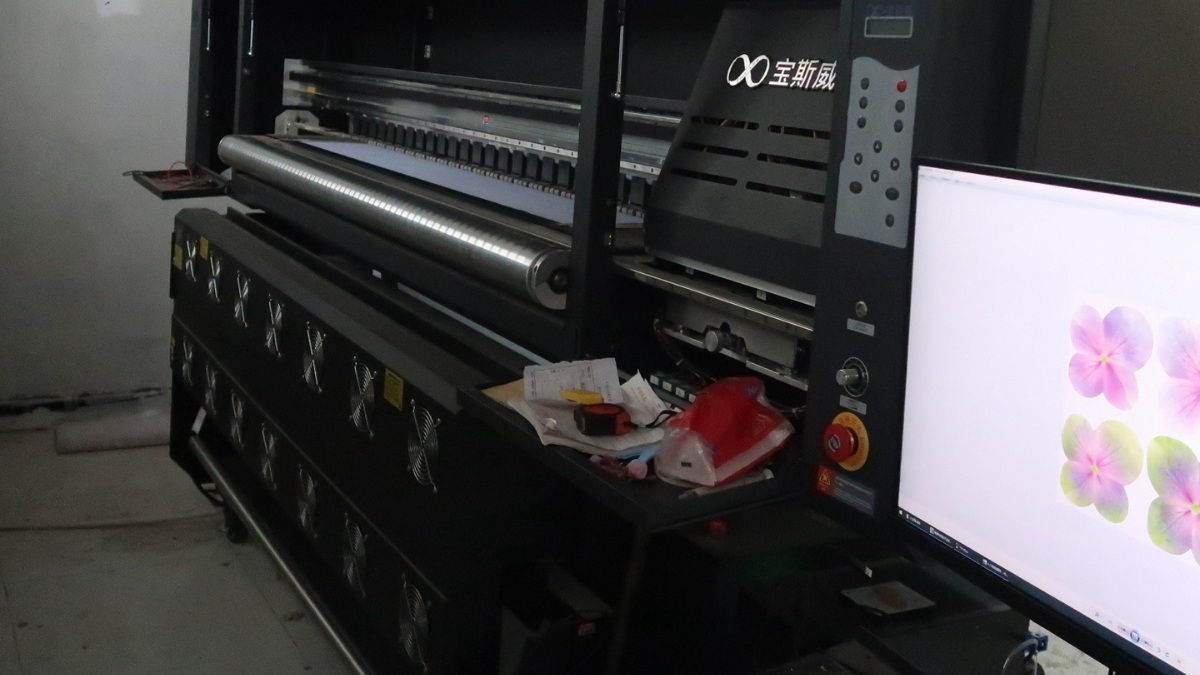
Packaging and Logistics
1. Packaging Techniques
Once the artificial plants and silk flowers have been crafted, the next crucial step is packaging. This stage is vital to ensure that the plants reach their destination in pristine condition. Manufacturers use a variety of packaging materials, often prioritizing eco-friendly options to align with global environmental concerns.
The packaging process for artificial plants and flowers is designed to protect delicate parts like petals and leaves. Care is taken to prevent any damage during transit, whether the journey is within China or to far-off locations around the world.
The use of sturdy, yet sustainable materials in packaging reflects the industry’s commitment to delivering quality while being mindful of the environment.

2. Shipping and Handling
The journey of artificial plants from the factory to the market is a testament to the efficiency and effectiveness of modern logistics. Manufacturers coordinate with various shipping and logistics companies to ensure timely and safe delivery of their products. This includes managing the complexities of international shipping, from navigating customs regulations to ensuring cost-effective transportation.
For international shipments, manufacturers must also adhere to the specific packaging and shipping standards of different countries. This ensures that the artificial plants and silk flowers meet the expectations of overseas buyers in terms of quality and compliance.
The logistics of shipping these products is a coordinated effort, showcasing the manufacturer’s ability to deliver a wide selection of products to a global audience.
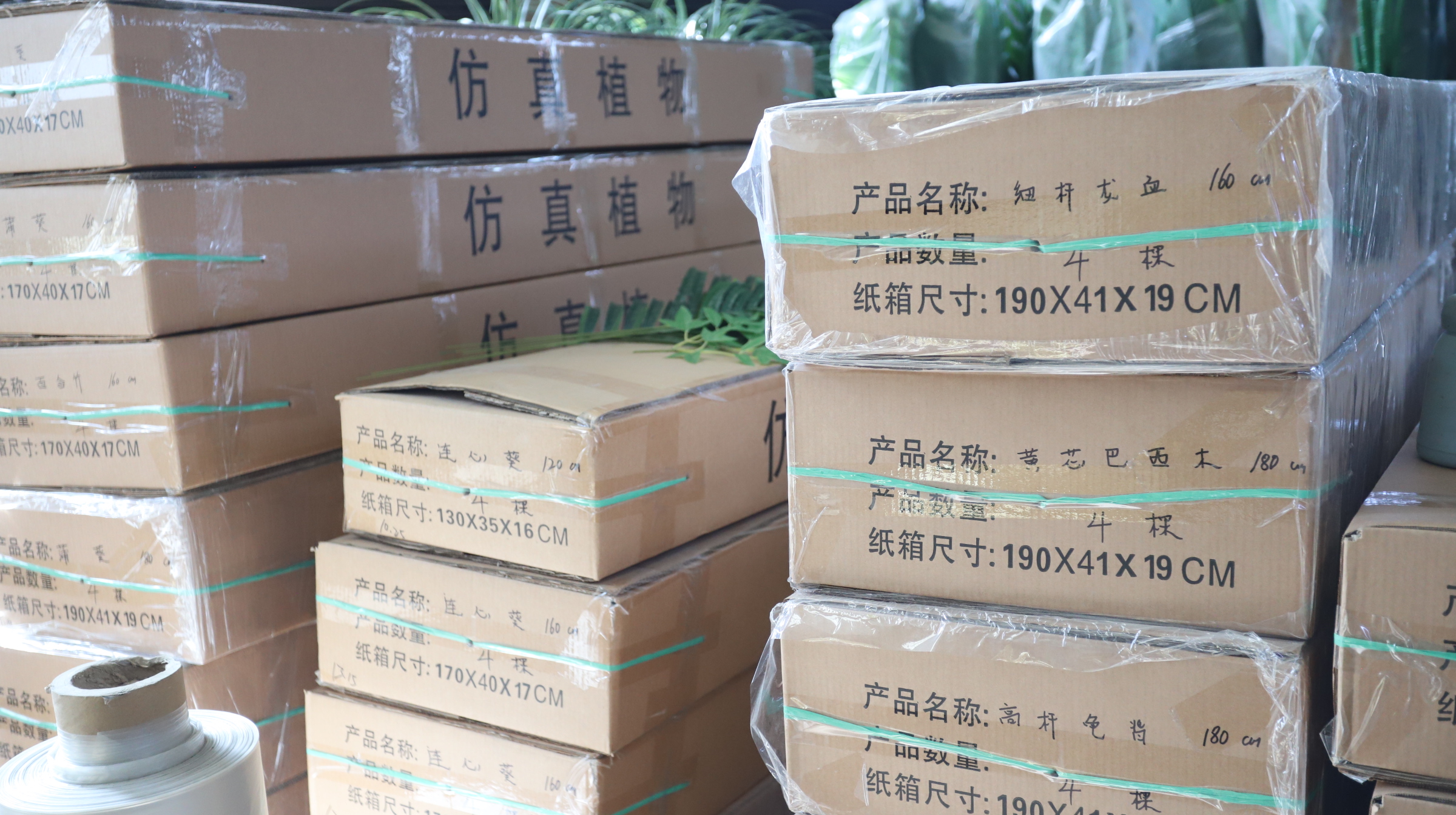
Customs and Compliance
1. Navigating International Regulations
The global journey of artificial plants and flowers from China to various international markets involves more than just physical transportation; it also encompasses navigating the complex world of international trade regulations. Manufacturers must be well-versed in the compliance standards of different countries to ensure a smooth transition through customs.
This compliance includes understanding and adhering to regulations related to the materials used, such as plastics and silk, and ensuring that all products meet the quality and safety standards set by the importing countries.
Manufacturers often invest in research and development to keep up with these changing regulations, demonstrating their commitment to maintaining high standards in their products.
2. Customs Clearance
Customs clearance is a critical step in the journey of artificial plants to their final destination. Manufacturers must prepare and provide detailed documentation, including data about the materials used, such as plastic, silk, and other fabrics, to facilitate this process. This documentation ensures that all products comply with the importing country’s regulations, including environmental and safety standards.
Efficient handling of customs clearance is essential to avoid delays and additional costs. Manufacturers often work with experienced logistics partners to manage this process, ensuring that their artificial plants and flowers reach their buyers without any hurdles.
This attention to detail in managing customs and compliance underscores the manufacturer’s dedication to delivering quality products and services to their global clientele.
Marketing and Sales Strategies
1. Targeting B2B Buyers
In the competitive world of artificial plants and flowers, understanding and effectively targeting B2B buyers is crucial. Manufacturers need to recognize the unique needs and preferences of distributors, wholesalers, and purchasing managers across different regions. This understanding informs the development of tailored marketing strategies that highlight key product features like quality, variety, and the eco-friendly nature of the materials used, such as silk, plastic, and other sustainable options.
Manufacturers leverage their extensive experience and knowledge of the industry to communicate the benefits of their products. This includes emphasizing the low cost and long-lasting nature of artificial plants compared to real plants, and showcasing their wide selection of products, from silk flowers to faux plants, that cater to various market demands.
2. Digital Marketing and Online Presence
In today’s digital age, having a strong online presence is essential for reaching global B2B buyers. Manufacturers invest in digital marketing strategies, including SEO (Search Engine Optimization) and targeted ads, to increase their visibility on search engines and social media platforms like Facebook.
Content marketing plays a significant role in these strategies. By creating engaging and informative content, manufacturers can attract and retain the attention of potential buyers. This includes sharing behind-the-scenes glimpses of the manufacturing process, highlighting the hard work and dedication that goes into creating each artificial plant and flower.
Additionally, manufacturers utilize online platforms like Alibaba to showcase their products and services, making it easier for buyers to discover and explore their offerings. These digital marketing efforts are designed to create a connection with potential buyers, providing them with the information they need to make informed purchasing decisions.
After-Sales Service and Relationship Management
1. Customer Support
After-sales service is a critical component of the customer experience in the artificial plant industry. Manufacturers understand that providing excellent customer support is key to maintaining a strong business relationship with their B2B clients. This includes addressing inquiries, managing feedback, and resolving any issues related to the products, whether they involve silk plants, faux flowers, or other varieties.
Effective customer support also involves providing detailed information about the care and maintenance of artificial plants, ensuring that clients can maximize the longevity and appearance of their purchases. Manufacturers often provide guides and tips on their websites and through customer service channels, adding value to their offerings.
2. Building Long-Term Relationships
The goal of every manufacturer is not just to make a sale but to build a lasting relationship with their clients. This is achieved through consistent quality, reliability, and understanding the evolving needs of the market. Manufacturers strive to be more than just suppliers; they aim to be partners in their clients’ success.
Feedback from clients is invaluable in this process. It helps manufacturers understand the market’s needs, adapt their product range, and improve their services. Regular communication, through emails, social media, and face-to-face meetings at trade shows, helps in understanding the specific needs and preferences of clients, enabling manufacturers to tailor their offerings and services accordingly.
By focusing on these aspects of after-sales service and relationship management, manufacturers ensure a high level of customer satisfaction, fostering loyalty and encouraging repeat business. This approach not only benefits the clients but also contributes to the manufacturer’s reputation as a reliable and customer-centric business.
Case Studies/Success Stories
1. Highlighting Successful Deliveries
The journey of an artificial plant from manufacturer to market is filled with stories of success and customer satisfaction. These case studies serve as tangible proof of the manufacturer’s ability to meet and exceed client expectations. From the intricate crafting of silk flowers to the efficient delivery of large orders of faux plants, each success story is a testament to the manufacturer’s dedication to quality and service.
For instance, a recent project involved supplying a large quantity of artificial plants to a major distributor in Europe. The challenge was not just in meeting the high standards of quality and design but also in ensuring timely delivery and seamless customs clearance. The manufacturer’s expertise in managing these aspects led to a successful delivery, earning praise and repeat business from the client.
2. Testimonials from Satisfied B2B Clients
Testimonials from satisfied clients are powerful endorsements of the manufacturer’s products and services. These testimonials often highlight the quality of the artificial plants, the attention to detail in the manufacturing process, and the excellent customer service provided throughout the transaction.
Clients from various countries, including America, Canada, and South Africa, have expressed their satisfaction with the wide selection of products, from silk plants to greenery, and the ability of the manufacturer to customize orders to meet specific needs. These testimonials are not just words of praise; they are reflections of the strong relationships the manufacturer has built with its global clientele.
Conclusion
As we reach the end of our exploration into the journey of an artificial plant from manufacturer to market, it’s clear that this process is much more than just creating and selling a product. It’s about crafting a piece of art that brings the essence of nature into various spaces without the maintenance of real plants. From the initial design inspired by natural greenery to the use of diverse materials like silk, plastic, and eco-friendly alternatives, each step is taken with utmost care and precision.
The journey also highlights the manufacturer’s commitment to innovation, quality, and sustainability. The advancements in production techniques, the meticulous approach to packaging and logistics, and the stringent adherence to international regulations and customs, all reflect the dedication to excellence.
This journey is not just about the products but also about the relationships built along the way. The manufacturer’s focus on customer satisfaction, from providing detailed product information to ensuring efficient after-sales service, is a cornerstone of their business philosophy. The success stories and testimonials from satisfied B2B clients across the globe are a testament to this commitment.
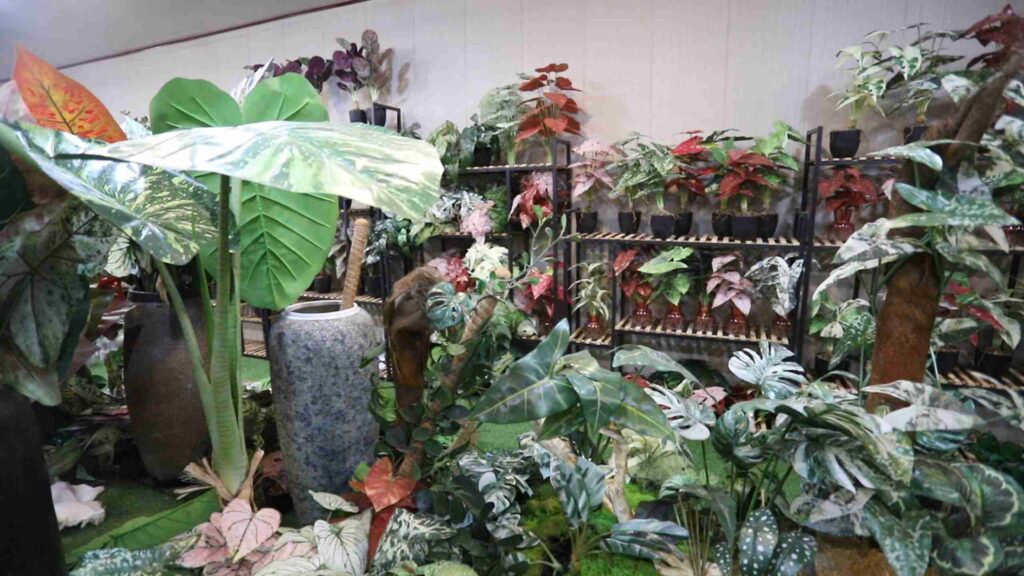
Call to Action
For distributors, wholesalers, and purchasing managers interested in exploring a partnership, the manufacturer extends an invitation to get in touch. Whether it’s to request a free catalog, inquire about custom color options, or discuss specific needs, the manufacturer’s efficient sales team is ready to assist.
The manufacturer also encourages potential clients to visit their website and explore the wide selection of artificial plants and flowers available. From silk flowers to faux greenery, there’s a vast array of products to suit various preferences and requirements. With the promise of low MOQs, high-quality products, and exceptional service, the manufacturer is poised to meet the needs of businesses around the world.
Summary
In the bustling factories where artificial plants are brought to life, the process is a symphony of hard work, meticulous research, and innovative production techniques. Here, the transformation of various materials, especially plastics, into lifelike greenery is not just about creating a product; it’s about crafting an experience that closely mirrors the real thing. The manufacturers, through their dedication and attention to detail, ensure that the end result is a stunning replica of nature’s beauty.
This journey of creating each artificial plant is underpinned by a commitment to environmental responsibility. The use of eco-friendly plastics and a focus on recycling processes reflect the industry’s awareness of its environmental impact. Manufacturers are not just replicating the green of nature in their products but are also actively contributing to the green movement by managing their production practices in an eco-friendly manner. This approach is a testament to their effectiveness in balancing business objectives with environmental care.
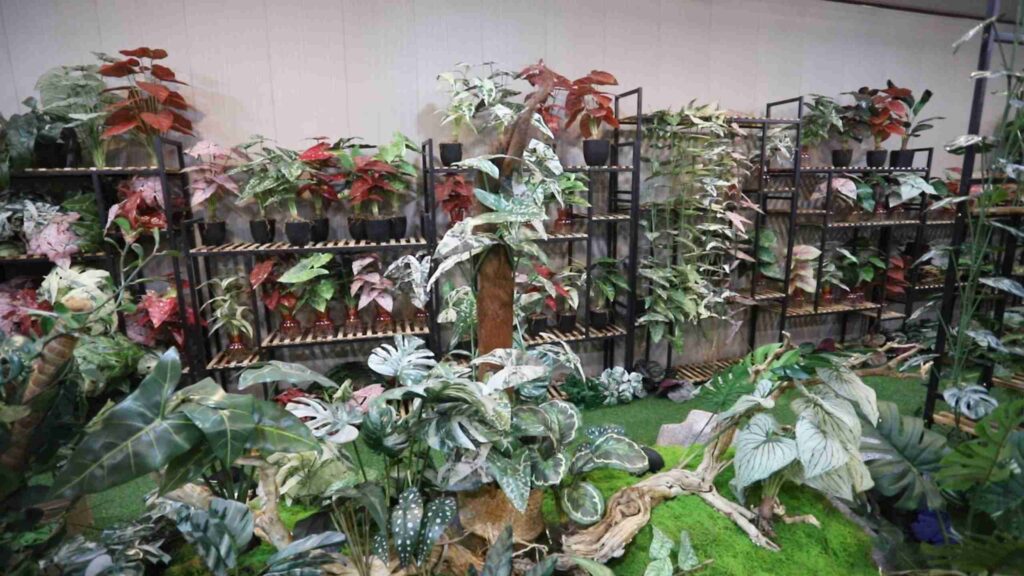
The location of these manufacturing units plays a crucial role in the entire process. Situated in areas with access to the necessary resources, these factories are hubs of innovation and efficiency. Here, the development of new designs and materials is a continuous process, driven by the goal to deliver products that are indistinguishable from the real thing. The manufacturers invest in research to explore new forms of materials that are both high in quality and sustainable.
In the realm of artificial plant production, every detail matters. From the selection of materials to the final packaging, each step is carefully measured to ensure the highest standards of quality. The hard work of the craftsmen and women in these factories is evident in every leaf and petal, each meticulously crafted to mimic nature’s diverse patterns.
Social media platforms like Facebook have become instrumental in showcasing this intricate process to the world. Through these channels, businesses and individuals alike can watch the journey of these artificial plants, gaining an appreciation for the effort and skill involved. It’s an opportunity for manufacturers to open their doors virtually, inviting customers to visit, either online or in-store, to explore their wide range of products.
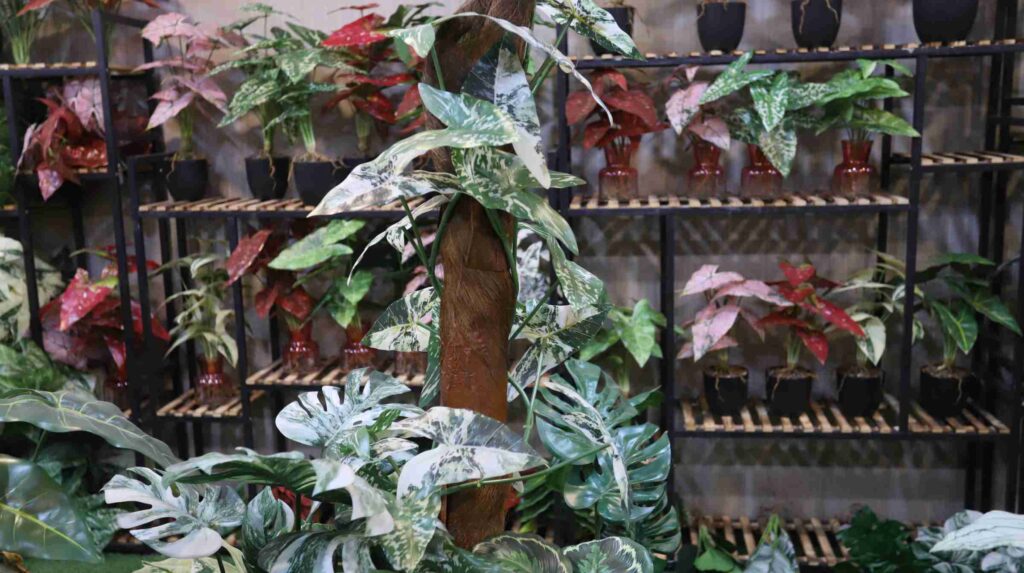
The price of these artificial plants is set considering the extensive process and quality of the materials used. It reflects the balance between affordability and the premium nature of the product. For businesses looking to add a touch of nature to their environments without the upkeep of real plants, these artificial alternatives offer the perfect solution.
In conclusion, the production of artificial plants is a complex yet rewarding process. It’s a blend of art, science, and environmental consciousness, resulting in products that bring the essence of nature into various spaces. For those in the business of selling these creations, it’s not just about offering a product; it’s about providing a piece of nature, crafted with care and precision.

